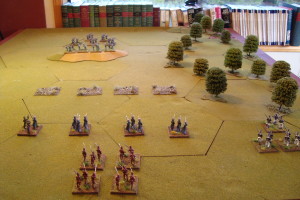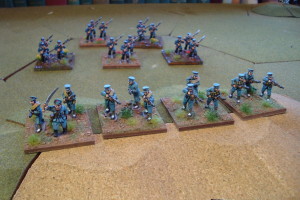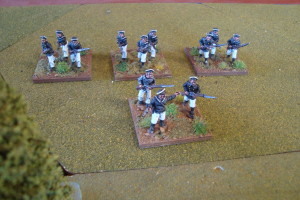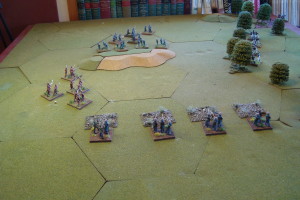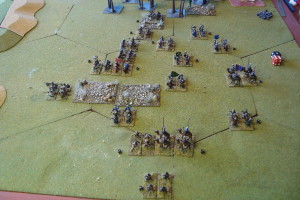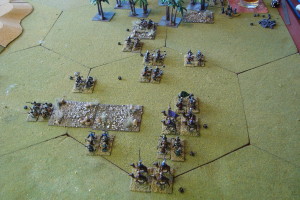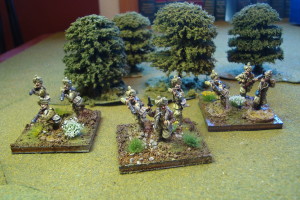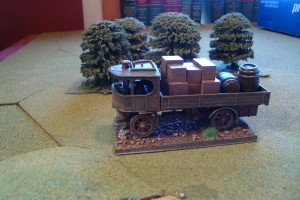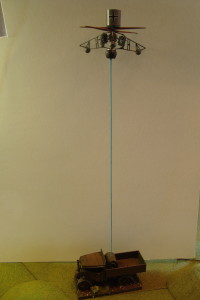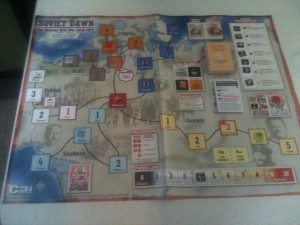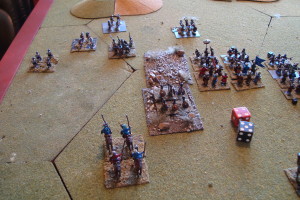Finished up my last play thru of the Luzon Scenario in The Damned Die Hard. Earlier sessions are described in a previous post. I played this scenario at least six (6) times, and in each playing the Japanese fail to make any appreciable progress towards Manila. Seems ahistorical.
However, there are administrative reasons for the first few failures. Which is a polite way of saying I displayed some, well, incompetence.
I neglected to thoroughly read the scenario rules. Not the first time this has happened. For the first couple of games I missed the mandatory US setup adjacent to the Japanese lodgment at Lingayen Gulf and then the mandatory two (2) regimental equivalents (RE) “within two (2) hexes of 1718”. These constraints prevent any initial defense in strength along terrain blocking the axis of advance towards Manila,
OK, tried it again, assuming that “within” was inclusive of 1915. Once again, the Japanese made little progress. However, in the middle of the night it dawned (no pun intended) on me that maybe “within” wasn’t inclusive. In these situations I go to Experten, and the Experten in this case is Tim. His response was that “within” was not inclusive.
OK, tried it again, this time with 2 REs of units back from the MLR. Same bloody result.
OK, tried it again, this time making the assumption that units shown in T/O as “Battalion Groupings” were not “Small Battalions” that have lower RE strengths and reduce possible GS air strikes. Same damn result.
There are several reasons for this. One, the best odds the Japanese can get are 4:1 on 1915, the hinge of the US defenses. This assumes that none of the Japanese forces are disrupted in the mandatory check before combat. Second, the impact of airpower is minimal since the rules limit ground support (GS) to one unit per two (2) REs, excluding artillery. Given the scale of the game, the Japanese have only 4.5 REs (exclusive of artillery) in their hex. Third, while the Japanese movement advantage in rough translates to a +1 to their die roll, it is negated by the -1 for the rough. So, it takes a six (6) to blast a hole in the US line.
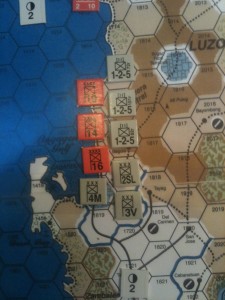

So, why the angst?
A successful disruptive Japanese attack during the first critical turn is highly unlikely. Any result less than a DE allows the US Reserve Force (two (2) hexes north of Manila) to move up after the attack and plug any gaps as well as reinforce the MLR. The ability of the US player to begin assembling Philippine divisons and a light armor cadre further reduces the chance of any Japanese success.
According to The Fall of the Philippines, the official history of the campaign. The Japanese made significant progress before Jan 1, forcing the US forces to retire to Bataan. I confirmed this in the West Point Atlas of American Wars, which has several maps on the campaign. Based on my experience and reading of the scenario and rules, there is just no way this can happen.
Oh Well……My, My….
All told it was time well spent. I enjoyed the opportunity to really dig into the rules and replay a scenario several times rather than a more typical “one and done”.
I’m hoping this familiarity with The Glory game system will hold me in good stead when I travel to Portland next week to play the Hong Kong Scenario in War of Resistance with Tim.
